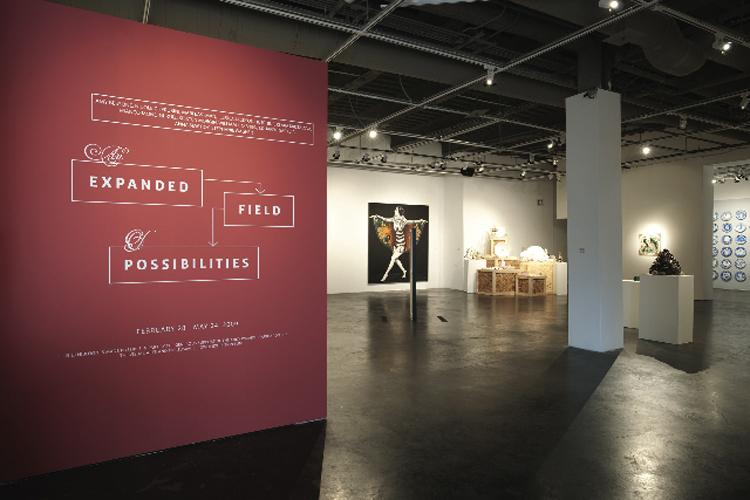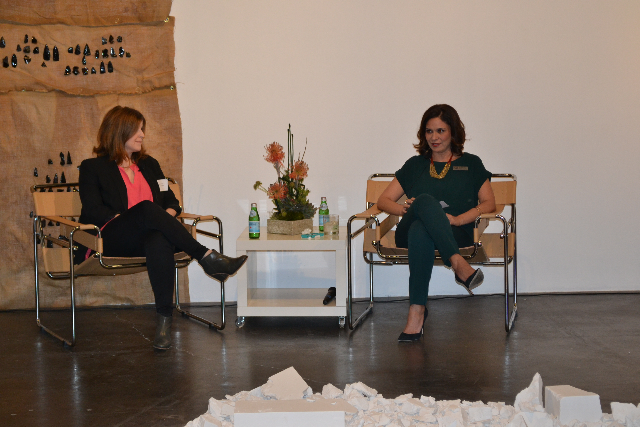“We are not solely regionally focused,” says Miki Garcia, executive director of Santa Barbara Contemporary Arts Forum, which will change its name to Museum of Contemporary Art Santa Barbara next week. “The artists that we show are local, national and international, so the projects that we’re doing here are on par with what the MOCA and the Hammer are doing [in Los Angeles]. It’s smaller in scale because of the footprint, but the kind of work that we’re doing in terms of contributing to the field is just as rigorous. We are expansive in our mission to present the most compelling contemporary art being made today.”
The newly named Museum of Contemporary Art Santa Barbara has been an alternative arts space since 1976. Admission is free. According to Garcia, who has been in charge of daily operations at the nonprofit institution since 2005, MCA Santa Barbara has always been concerned with and engaged in process, and supporting—not canonizing—artists. Without a permanent collection, the exhibitions come and go about every three months.
“Our job is not to say this is the best art of all time,” Garcia says. “We are not an encyclopedic museum whose mission has a retrospective, historical position. Ours is: This is what’s happening now. That’s the more interesting story for us.”
Although museum is now part of its title, MCA Santa Barbara has no immediate plans to acquire work for a permanent collection. Ideas have been circulating about how to restructure its membership, and in April, a Founder’s Circle was created for donors who give $2,000 or more for the purpose of growing the museum. Twenty people have already signed up.
“By becoming a museum, it gives us more resources to bring in more schools and bigger audiences so there’s a better understanding of what we do,” says Garcia. “The big difference is that with the exhibitions there will be more thought to having them be more engaged with the public, not a quiet space just for artists. We want to have more of a dialogue with the community, and not just Santa Barbara, but the arts community in general.”
This isn’t the first time Garcia has set out to make contemporary art more accessible to a wider spectrum of people. Previously, she worked at New York’s Public Art Fund and the Museum of Contemporary Art San Diego before taking over at MCA Santa Barbara, where, through donor gifts and grants, she has grown the operating budget from $300,000 to $1 million.
“It’s exciting for us,” says Garcia. “We have this mission where we are advocates for art and artistic practice. We want to carve out a space in our community in Santa Barbara and the Central Coast where artists can be avant-garde and think at the highest, most experimental levels, and then we try to make that accessible for our audience. It’s like the space is a conduit between the artist and giving them resources so they feel like it’s a lab, but to have the audience come in and be a part of that process, to be engaged.”
Even with the name change, MCA of Santa Barbara’s physical location will remain the same and funds will be allocated to upgrade the current facilities. Its main site is located on the Upper Arts Terrace of the Paseo Nuevo Shopping Center off Chapala Street in downtown Santa Barbara. Here, in addition to regular exhibition viewing, guests can attend live events, like performance-based Forum Lounges on the first Thursday of every month, and smART Talks. The satellite location, about seven blocks away, is Hotel Indigo on State Street, which is in the middle of the burgeoning arts district known as the Funk Zone. Garcia was introduced to the hotel’s owners, Marc and Laurie Recordon, just a short time after visiting 21c, a hotel-museum partnership in Louisville, Ky., operated by collectors who decided to exhibit artwork in their hotel.
“If MCA Santa Barbara is asking artists to think in terms of risk-taking and experimentation, if that’s our mission, we have to take those ideas to heart on an institutional level,” says Garcia. “What we’ve been doing in the last couple of years is broadening our audience and rethinking how contemporary art museums work. How we can adapt to a changing demographic and attract a younger audience.”
Garcia approached the Recordons about hanging art on the walls of the hotel’s public spaces. The couple loved the idea, and Hotel Indigo’s first exhibit, titled “Open House,” coincided with its opening in March 2012.
“It creates a much more open, accessible environment,” Garcia says. “It’s such an interesting way for me to look at how people who wouldn’t go to a museum would have this critical-thinking hat not on as they walked in, and have a different experience. In a hotel, their relationship to the artwork is much more curious and open. It’s along the lines of how I want our public to interact with contemporary art.”
Hotel Indigo’s current exhibit, “Limuw: An Ode to the Sea,” runs through January 1, 2014. MCA Santa Barbara’s next exhibit features work by Dasha Shishkin and Edgar Orlaineta and opens July 6.
Museum of Contemporary Art Santa Barbara is located on the Upper Arts Terrace of the Paseo Nuevo Shopping Center on Chapala Street, Santa Barbara. For more information, call 805-966-5373 or visit mcasantabarbara.org. Hotel Indigo satellite location is located at 121 State Street, Santa Barbara. For more information, call 805-966-6586 or visit indigosantabarbara.com.





